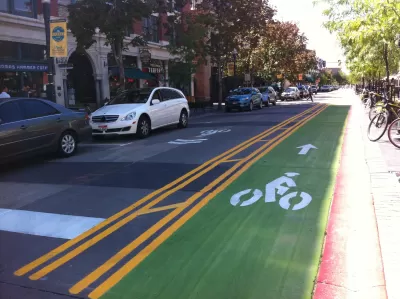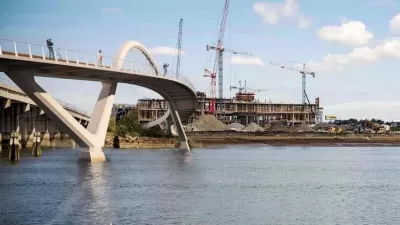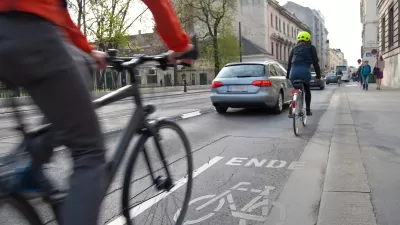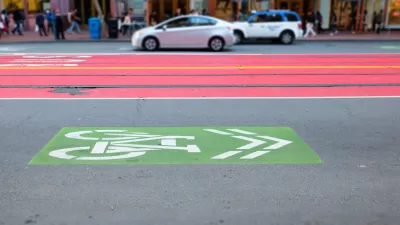A common refrain among politicians who oppose bike infrastructure investments is that people who bike don't pay for those projects. What's a bike advocate to do?

Dave Cieslewicz, of the Bike Federation of Wisconsin, explains how he responds to a fairly standard question posed to bike advocates: Why don’t cyclists want to pay for their own bike lanes?
As Cieslewicz notes, the idea to tax bike riders goes beyond idle musings. A few years ago the state of Wisconsin considered a budget amendment that "would have imposed a $25 'registration fee' on every new adult-sized bike purchase in the state." Thus, the question requires a good answer. Here, Cieslewicz provides his standard response to the line of inquiry:
…most cyclists are also drivers, so we do pay gas taxes and vehicle registration fees that go to fund roads, including bike lanes, paved shoulders and the like. When we ride state trails – and some local ones – we pay for trail passes. And then there’s the savings in wear and tear on the roads, the lessened need for expensive car parking, the reduction in pollutants and green house gas emissions and the personal health benefits that end up saving everybody money in the long run.
Cieslewicz realizes, however, that his standard inquiry can't defeat the "intellectual Teflon" of the political opposition. One idea that failed to achieve adoption was voluntary bike registration. In this post, Cieslewicz offers another idea: "expanded use of current local registration fee revenues."
FULL STORY: Tax Cyclists for Road Upgrades?

Alabama: Trump Terminates Settlements for Black Communities Harmed By Raw Sewage
Trump deemed the landmark civil rights agreement “illegal DEI and environmental justice policy.”

Planetizen Federal Action Tracker
A weekly monitor of how Trump’s orders and actions are impacting planners and planning in America.

The 120 Year Old Tiny Home Villages That Sheltered San Francisco’s Earthquake Refugees
More than a century ago, San Francisco mobilized to house thousands of residents displaced by the 1906 earthquake. Could their strategy offer a model for the present?

Indy Neighborhood Group Builds Temporary Multi-Use Path
Community members, aided in part by funding from the city, repurposed a vehicle lane to create a protected bike and pedestrian path for the summer season.

Congestion Pricing Drops Holland Tunnel Delays by 65 Percent
New York City’s contentious tolling program has yielded improved traffic and roughly $100 million in revenue for the MTA.

In Both Crashes and Crime, Public Transportation is Far Safer than Driving
Contrary to popular assumptions, public transportation has far lower crash and crime rates than automobile travel. For safer communities, improve and encourage transit travel.
Urban Design for Planners 1: Software Tools
This six-course series explores essential urban design concepts using open source software and equips planners with the tools they need to participate fully in the urban design process.
Planning for Universal Design
Learn the tools for implementing Universal Design in planning regulations.
Clanton & Associates, Inc.
Jessamine County Fiscal Court
Institute for Housing and Urban Development Studies (IHS)
City of Grandview
Harvard GSD Executive Education
Toledo-Lucas County Plan Commissions
Salt Lake City
NYU Wagner Graduate School of Public Service





























